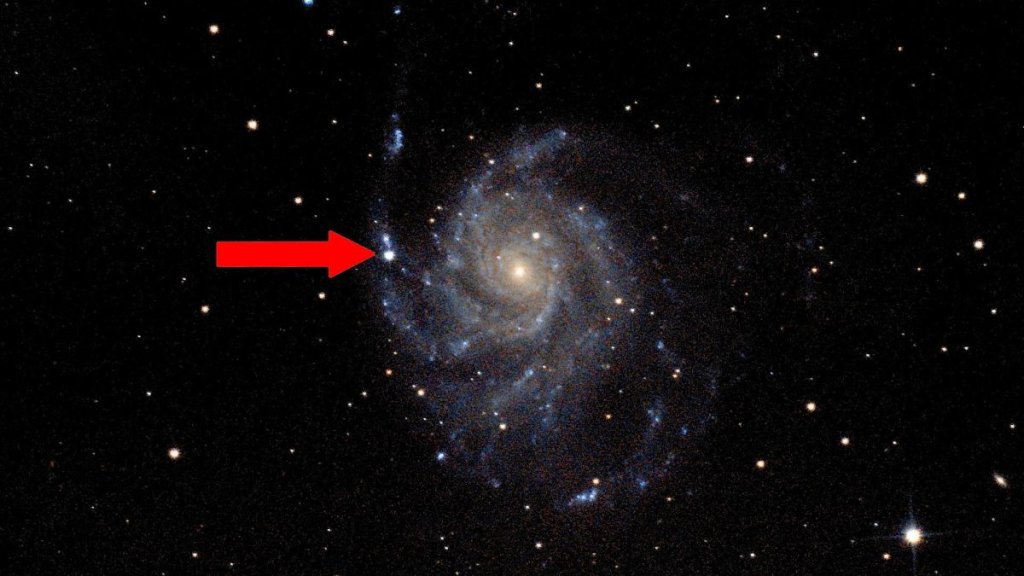
How to see the new supernova in the Pinwheel Galaxy (Image Credit: Space.com)
A star in a distant galaxy has exploded into a supernova, and you can watch the celestial spectacle yourself through your telescope.
Last week, astronomers observing the popular Pinwheel Galaxy watched a star in one of the galaxy’s arms glow into a brilliant spot of light. The star was soon after confirmed to be a new supernova, designated SN 2023ixf, located some 21 million light-years from Earth. Already, both professional and amateur astronomers worldwide are turning their telescopes and cameras toward the spot to observe this somewhat rare phenomenon.
If you want to see this new supernova for yourself, you’re in luck. The Pinwheel Galaxy, also known as Messier 101, or M101, is not particularly difficult to locate and observe with even small telescopes.
Related: This new supernova is the closest to Earth in a decade. It’s visible in the night sky right now.

Locating the Pinwheel Galaxy

Looking for a telescope to observe the Pinwheel Galaxy other awesome sights in the night sky? We recommend the Celestron Astro Fi 102 as the top pick in our best beginner’s telescope guide.
Luckily for Northern Hemisphere skywatchers, the Pinwheel Galaxy is circumpolar, meaning it stays above the horizon year-round. The galaxy is also located close to Ursa Major, one of the world’s most recognizable constellations that is home to the Big Dipper asterism. The galaxy can be found near the two stars at the end of the Big Dipper’s “handle,” Mizar and Alkaid. M101 is located a few degrees northeast of a point roughly halfway between these two stars. (Your clenched fist held at arm’s length covers about 10 degrees of sky.)
From New York City, the Big Dipper will be high in the sky to the north right around sunset and will remain visible throughout the night, although it will sink lower toward the horizon as the morning hours approach.

If you aren’t familiar with these stars, Ursa Major or the Big Dipper, there are plenty of stargazing apps that can point you in the right direction using your phone or other mobile device.
Locating supernova SN 2023ixf
Once you’ve located the Pinwheel Galaxy, it’s time to spot the new supernova. SN 2023ixf can be found toward the end of one of the galaxy’s spiral arms. It should be fairly easy to identify, as it will appear brighter than the other stars in the galaxy.

When observing M101 and SN 2023ixf, be sure to find an area with as little light pollution as possible and allow your eyes time to adjust to the dark before looking for the spiral galaxy. Some galaxies can be quite faint in areas with significant light pollution, so be patient.
If you are hoping to catch a look at the supernova SN 2023ixf, our guides on the best telescopes and best telescopes for beginners are a great place to start. Make sure to get the right telescope eyepiece! A lower-magnification, wide-angle eyepiece should do the trick.
And if you’re looking to snap photos of the supernova, the Pinwheel Galaxy or the night sky in general, check out our guides on the best cameras for astrophotography and best lenses for astrophotography.
Editor’s Note: If you snap an image of SN 2023ixf, and would like to share it with Space.com’s readers, send your photo(s), comments, and your name and location to spacephotos@space.com.





